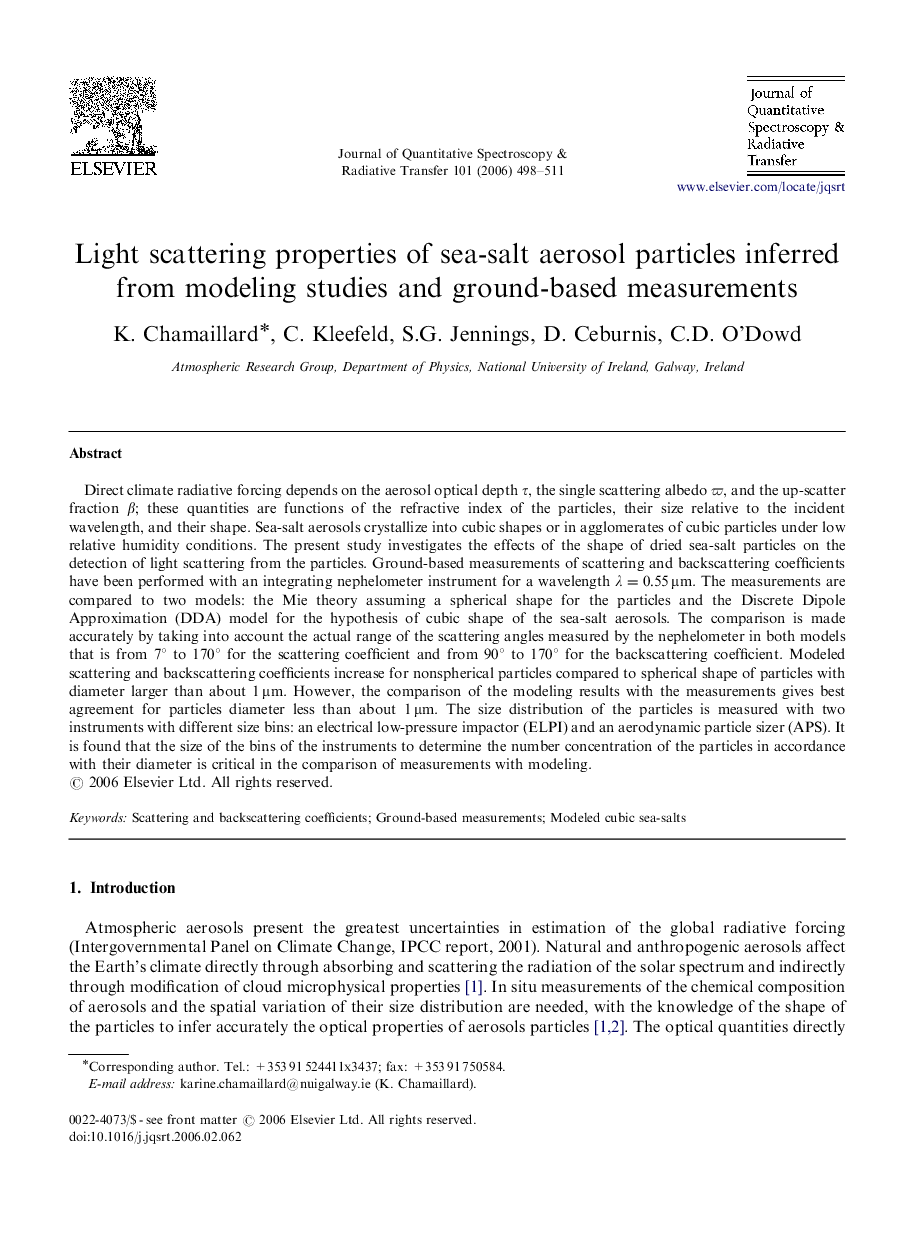| Article ID | Journal | Published Year | Pages | File Type |
|---|---|---|---|---|
| 5430617 | Journal of Quantitative Spectroscopy and Radiative Transfer | 2006 | 14 Pages |
Direct climate radiative forcing depends on the aerosol optical depth Ï, the single scattering albedo Ï, and the up-scatter fraction β; these quantities are functions of the refractive index of the particles, their size relative to the incident wavelength, and their shape. Sea-salt aerosols crystallize into cubic shapes or in agglomerates of cubic particles under low relative humidity conditions. The present study investigates the effects of the shape of dried sea-salt particles on the detection of light scattering from the particles. Ground-based measurements of scattering and backscattering coefficients have been performed with an integrating nephelometer instrument for a wavelength λ=0.55μm. The measurements are compared to two models: the Mie theory assuming a spherical shape for the particles and the Discrete Dipole Approximation (DDA) model for the hypothesis of cubic shape of the sea-salt aerosols. The comparison is made accurately by taking into account the actual range of the scattering angles measured by the nephelometer in both models that is from 7° to 170° for the scattering coefficient and from 90° to 170° for the backscattering coefficient. Modeled scattering and backscattering coefficients increase for nonspherical particles compared to spherical shape of particles with diameter larger than about 1 μm. However, the comparison of the modeling results with the measurements gives best agreement for particles diameter less than about 1 μm. The size distribution of the particles is measured with two instruments with different size bins: an electrical low-pressure impactor (ELPI) and an aerodynamic particle sizer (APS). It is found that the size of the bins of the instruments to determine the number concentration of the particles in accordance with their diameter is critical in the comparison of measurements with modeling.
